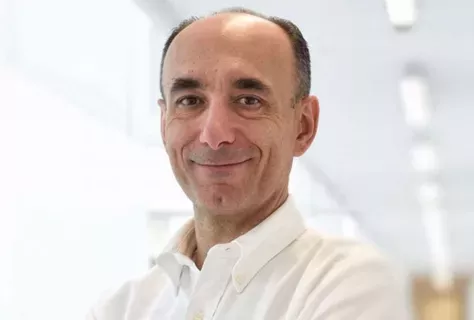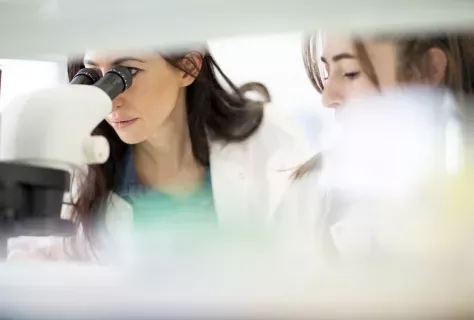Published on 17.12.2019
Microbes do not explain everything. So the discussion begins with immunologist and pediatrician Jean-Laurent Casanova. Flu, tuberculosis, herpes, etc. Of course, it all starts with the presence of a virus or bacteria within the body, but then why are the reactions different: whereas some spontaneously recover from the infection, often without any clinical manifestation, other individuals develop serious, even fatal clinical forms. Jean-Laurent Casanova has had to battle for a long time to recognize a genetic explanation for these differences in response.
A medical-scientific culture
After a dual degree in science and medicine running alongside each other, in 1996 he identified the first mutation, in this case in IFN-γ receptor 1, responsible for mycobacterial infections. “After spending several years between the pediatric clinical department of Claude Griscelli, then Alain Fischer, at the Necker-Enfants Malades hospital and two immunology laboratories, the one of Philipe Kourilsky at Pasteur Institute and the one of Janet Maryanski in Lausanne, I decided to study infectious diseases from a genetic perspective” recalls Jean-Laurent Casanova. It seems simple said like that, however, it requires the pediatrician-immunologist to forget immunology. “My dual degree allowed me to therefore tackle a question raised for several years but still unresolved to this day, namely why only some people affected by an infection develop a serious illness” continued the researcher. From the work of Louis Pasteur, we know that microbes are responsible for infectious diseases. However, it is the case of a young girl with an infection spread by BCG (BCG-ite) following vaccination and even though she did not suffer from any immunodeficiency, which led Jean-Laurent Casanova to somehow reintroduce the human and genetic heritage into these two parts. He also made it the subject of his thesis in medicine supported in 1995 and in which he hypothesizes a genetic origin in this clinical case, which he subsequently proved.
My dual degree allowed me to therefore tackle a question raised for several years but still unresolved to this day, namely why only some people affected by an infection develop a serious illness
Genetics in infectious diseases
Since, Jean-Laurent Casanova’s team has identified about a hundred genetic diseases that could explain a susceptibility to some infections. For years Jean-Laurent Casanova has conducted all his research in collaboration with Laurent Abel: the first to oversee the experimental laboratory, one in Paris at the Imagine Institute and the other in New York at Rockefeller University; while the latter tackles it thanks to the mathematical laboratory also in New York and Paris, to bring to light these little genetic variations that could explain the infections. Since the formation of this duo, the discoveries have not stopped coming.
In 2006, the mutation of a gene meant to play a role in the protection of our body against infections explained, on its own, that a herpes infection which only usually causes a simple herpes sore resulted in the death of the person.
In 2015, they revealed a susceptibility to flu. “We found the origin of this vulnerability by studying the genome of a young 2 and a half year old girl who had contracted a very severe form of flu requiring her to be hospitalized in the pediatric intensive care unit, remembered Jean-Laurent Casanova. She had inherited a mutated allele of the coding gene for the IRF7 regulatory factor from both of her parents. A loss of interferon production followed, causing cascades of many disruptions in her defense system against infection by the flu virus.” From this discovery, therapeutic strategies emerged based on the recombinant interferons, to help fight severe forms of flu in children.
In 2018, it was tuberculosis that was associated with a genetic origin.. “One European in 600 has an alteration of both copies of the TYK2 gene, which increases the risk of developing tuberculosis after exposure to mycobacteria Mycobacterium tuberculosis” develops the researcher. Besides the therapeutic prospects - the addition of interferon gamma could become an interesting therapeutic option in this context, this discovery raises the question of how relevant research on this genetic predisposition is, particularly in Europeans who travel to endemic areas such as Africa, South-East Asia or Latin America.
Another approach to infectious diseases
The impact of Jean-Laurent Casanova’s work is vast, as it concerns prevention, genetic counseling and the development of new therapeutic approaches, all in the field of infectious diseases, which remains a major cause of death worldwide. An observation which can only encourage the researcher to stay on track even if it sometimes requires shaking up the establishment of the world of research a little. “This repositioning of infectious diseases as genetic diseases today makes school and several laboratories work in this field, concludes the pediatrician-immunologist. The acceleration of sequencing capabilities associated with bioinformatics should now allow us to go even further in the study of genetic determinism to better understand infectious diseases and fight against these diseases that do not stop developing.”






